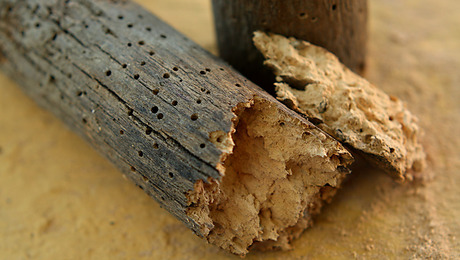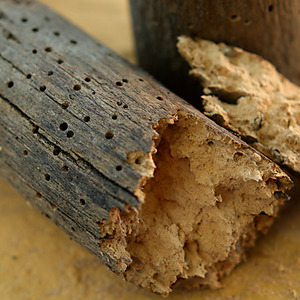I have a 24’X24′ unfinished room above my garage
The floor framing is comprised of 2X10 joists@ 24″ on C.E. hung off a central steel I-Beam and covered with 3/4″ T&G plywood.
The 12/12 roof framing consists of 2X10 rafters @ 24″ O.C. extending from a 2X12 ridge board down to a “seat cut” toe- nailed to the double 2X6 top plate of a 14″ knee wall.This knee wall was necessary in order to align the garage roof with the roof of the house. It is an extension of the underlying garage walls and is nailed through the plywood floor to the floor joists.
Each of these rafters has a 2X6 collar tie positioned 1/3 down from the ridge board. Since the rafters are not nailed to the floor joists I assume some if not all of these collar ties are necessary.
BUT, I want a”cathedral “ceiling in this room. I would appreciate comments and advice on how I can best reduce or eliminate the collar ties.
Thanks,
Hunter1
I have some additions to this message. I posted these in a separate message on 12/2/06 -same subject “Collar Ties “.I have been advised to “paste” the second message but do not know how to do so. Help!!
Thanks,
Hunter1
Edited 12/3/2006 2:38 pm ET by Hunter1


















Replies
Unfortunately, it sounds like you can't reduce or elimate them and will probably need to add a weight-bearing ridge beam for a cathedral ceiling, unless there is an engineer that will design a rafter tie setup up higher than normal that gives you the headroom.
The ridge beam will also need a load path to the foundation so that may include pulling out some drywall, installing a header over any windows in the path, and adding a few posts.
You didn't mention how long the room is, but that will have a major impact on the proper sizing of the ridgebeam.
To function as a rafter tie, which is the term for a tie that completes the structural triangle of the roof, they are usually located in the lower 1/3. If, as you describe, the ties are no lower than 1/3 from the bottom of the ridge then they are technically only a collar tie, which is used to hold the rafters together in uplift situations and isn't counted as a structural member.
Since the rafters are not nailed to the floor joists I assume some if not all of these collar ties are necessary.
Collar ties are required every 4' by IRC regardless of what the other end of the rafter is nailed to. If an engineer looks at it they will usually require them at every rafter connection.
Good luck :-)
Beer was created so carpenters wouldn't rule the world.
you need make it a structural ridge beam.
you need an engineer.
You'll also need a post at each end of the ridge beam which will transfer the load on down to the foundation. If there is a header below the posts, they have to be checked for capacity and may have to be replaced with headers sized to carry the loads. Get an engineer.
yes.....to all of what you said....bearing rindge beams or anything that is bearing obviously needs support carried thru to foundation.
engineer will spec all of that.
Edited 11/27/2006 10:41 am ET by alrightythen
The collar ties are to prevent the rafters from spreading which would let the ridge sag. With your rafters only sitting on a 14" wall, I don't think I would remove them. The ridge beam would definitely work. You didn't mention how much headroom you have, and I'm too lazy to figure it out. If you have the headroom, I would build a new ceiling below the existing one. The center(underside) of the collar ties would be your new ridgeline. You would, in effect, be building an 8/12 roof right underneath the existing one.
If you have kneewalls, you can nail a ribbon board at the top and just go from there to the new ridge.
My house was buit in 1923 with 2x4 rafters every 24"-30", no collar ties or kneewalls. It took me a over a hundred hours to get enough of the sags out of it to finish it.
You used the correct term - collar tie.
While rafter ties are one way to control the spread of walls, there are better ways.
4' in from the existing wall the ceiling is 5' high (room width is 16'). Certainly large enough for a room.
The 4' of spac gives you lots of room for an engineered solution.
I'm thinking along the same lines on an interior knweewall addition, but by coming in that far, you are also adding load to mearly midspan of an undersized floor joist at 24" OC. This may require doubling them at that layout, another reason he needs an engineer on site, to consider ALL the details that come togeether.
Welcome to the Taunton University of Knowledge FHB Campus at Breaktime. where ... Excellence is its own reward!
As several of us have said: An engineer has a lot of space in which to place a solution.
I agree with finding an engineer. Consider building scissor truss out of 2x6 and 1/2" plywood. It will lower the interior peek but gives you a super oportunity to add more insulation. Just make sure that you do not remove more than 2 collar ties at a time. After all, a collar tie is a form of a brace and the roof needs to be braced against its own weight, wind and snow.
Get an engineer, but...
You should be able to buttress the 14" knee walls to form a triangle comprised of the knee wall stud, floor joist, and a new diagonal member. It would chew up some floor space, but there is not much headroom there anyway. The new member might be metal strapping, since it is only working in tension. Once the possibility of the knee wall acting as a hinge is removed, you should be ok removing collar ties.
"Good design is good business"
Florence Schust Knoll (1917-)
"since it is only working in tension."Don't forget about wind loads alterally adding some amt of compression
Welcome to the Taunton University of Knowledge FHB Campus at Breaktime. where ... Excellence is its own reward!
You probably cannot, without inserting a structural ridge beam.
You should have an engineer look at this.
First, you have done an excellent job of verbally describing the conditions. Probably better than 98% of the questioners that come to Breaktime. This makes it easy to visualize.
Unfortunately, there are several weak points in your structure as it exists, and to remove the ties it will become worse. As it stands now, things are marginal, depending...
The weak points are as follows;
The floor joists part at the steel beam to sit flush to it. This means that while they can handle the vertical loads( probably, the 24" spacing makes them on the limits for a floor load), they are not performing as rafter ties unless there is some special connections taking the tension from one side wall continuous to the other, as these would do if they were continous, bearing on top of the steel.
The knee walls - there are ways to stabilize a wall in such a situation as you have, but it does not sound like you have done so. They are incapable of handling anything other than a vertical load.
This brings us top the ridge. The forces placed on a roof will push down on it. That load must be resisted with elements able to withstand the loads placed on the roof. One way of doing this is to use a truss to remain integral. A triangle tied together so the three verticii remain at the points they are designed to. Truss builders earn their money calculating the stresses and ways to resist them.
Another form of that basic triangle is what is commonly done, using full length floor joists and rafters tied together at the verticiis ( ridge and two top plates). The floor joists or cieling joists in other situations, become the rafter ties that prevent the ridge from sagging and the walls from spreading apart. Your steel and knee walls make this nearly impossible, tho not entirely.
The third way is to use a ridge beam designed and sized to handle half the load placed on the roof area, supporting that beam to the foundation as a point load at each end. This will probably be the best solution for you, but if the end point load lands over a garage door, we now have top know whether the door header is strong enough to trqansfer that load lareally to the jacks at each end of it, and whether yuou have enough jacks supporting the header.
The collar ties you have may be accidentally doing some marginal work in resisting ridge sag and wall spread so far, but collar ties are not intended fo rthis purpose. Collar ties in the upper third of the rafter are intended to resist the upward lift of wind on a roof structure that can tear it apart, hinging it at the ridge. rafter tioes are placed in the lower thrid of a rafter pair to resist outward thrust.
You also have marginal resistance in the diagphragm action of plywood or osb sheathing on the roof, saving you from trouble so far.
solutions from an engineer may also include use of special hardware from Simpson designed for kneewalls in situations similar to this, another kneewall about 2' or so inside the first with webs tieing it directly to the studding of the shorter one, leaving you with a smaller room than current.
Hope this helps.
Welcome to the
Taunton University of Knowledge FHB Campus at Breaktime.
where ...
Excellence is its own reward!
82338.1
Whew!
Welcome to the Taunton University of Knowledge FHB Campus at Breaktime. where ... Excellence is its own reward!
Further to my original message of 11/26 and regarding all of your much appreciated advice and comments. Thanks.
Firstly despite Piffins praise of my "written" description I made a big mistake.The floor joists(24"o.c. 2/10's) are not repeat not hung from the W10x26 steel beam. This beam extends below the ceiling of the garage. The joists are continuous across the beam from sidewall to sidewall. The beam is 22' long and rests on a 4-2x6 post on one end and and a 6-2x4 post on the other. These posts are on 8" foundation walls with10" concrete piers 8' to 18' deep positioned directly below the post locations.
There are no garage door openings or headers involved and it seems that the situation described above could provide support for a ridge beam suggested by most of you.
For quijibo: The head room is 13' 5" and the room is actually 24' 9" wide.
For IdahoDon: The room is 22'6" long and then extends another 13'0" at a 35* angle. The 22' 6' section is where I want the cathedral ceiling.
For Piffen: What is " the special hardware from Simpson"? Number please??
For GHR :What is (are) the engineered solution(s) that I "have lots of room for" Could it be the one suggested by Bman? See below.
For Bman: Your " triangle comprised of the knee-wall stud, floor joist, and a new diagonal member ( which could be metal strapping) sounds like a winner! This is very similar to the "2x4 ( a new diagonal member) connecting rafter to floor joist solution" as per QA on page 98 of FHB June/July 2006.
I prefer this solution even though I will need to take up some flooring. Note that the Engineer providing the answer in this QA is confusing rafter ties with c ollar ties.
New thought:
How about a 13'5" 2x4 load bearing wall from ridge board to floor down the center of the room?
This may seem a little strange but I want to use this room as a " trophy room" and need high walls.
If I put knee-walls at 9' and 5' on each side I have:
1 - room 9'wide ,2 - "rooms" 3'6" wide , and no high walls.
If I put a wall down the center and knee-walls at 5' each side I have:
2- rooms 8'wide, 2- 13' high walls, and space for bookcases etc. at/in the 5' knee-walls.
So- What do you all think?
I will be seeing an Engineer. By the way I am an Engineer. Colorado School of Mines. But - a Geological Engineer. Really the best kind by far!
Reznosonofavitch,
How's the boy gonna learn?A great place for Information, Comraderie, and a sucker punch.
Remodeling Contractor just outside the Glass City.
http://www.quittintime.com/
heh heh First timers sometimes need just a little :o)
be brownies ain't making it I think.
Edited 12/3/2006 3:28 pm ET by rez
For a change...........well, at least from last week.........
they're in the game.A great place for Information, Comraderie, and a sucker punch.
Remodeling Contractor just outside the Glass City.
http://www.quittintime.com/
30 to 0 ain't that awlful hard to better. bwaa!
It hasn't been pretty, but they got me glued to the seat.
25 and a breeze doesn't hurt either.
Little more wood to move and it's in on the couch for the duration.
Hey, there was some serious football on yestdy aftn/evening.A great place for Information, Comraderie, and a sucker punch.
Remodeling Contractor just outside the Glass City.
http://www.quittintime.com/
ya, ucla pulled a fast one. heh heh
be love it when that happens
Hey, the browns pulled it off! Wasn't pretty but it was football!
heh heh GO Browns!
Edited 12/3/2006 4:12 pm ET by rez
Right back at ya
Go
BrownsA great place for Information, Comraderie, and a sucker punch.
Remodeling Contractor just outside the Glass City.
http://www.quittintime.com/
Further to my original message of 11/26 and regarding all of your much appreciated advice and comments. Thanks.
Firstly despite Piffins praise of my "written" description I made a big mistake.The floor joists(24"o.c. 2/10's) are not repeat not hung from the W10x26 steel beam. This beam extends below the ceiling of the garage. The joists are continuous across the beam from sidewall to sidewall. The beam is 22' long and rests on a 4-2x6 post on one end and and a 6-2x4 post on the other. These posts are on 8" foundation walls with10" concrete piers 8' to 18' deep positioned directly below the post locations.
There are no garage door openings or headers involved and it seems that the situation described above could provide support for a ridge beam suggested by most of you.
For quijibo: The head room is 13' 5" and the room is actually 24' 9" wide.
For IdahoDon: The room is 22'6" long and then extends another 13'0" at a 35* angle. The 22' 6' section is where I want the cathedral ceiling.
For Piffen: What is " the special hardware from Simpson"? Number please??
For GHR :What is (are) the engineered solution(s) that I "have lots of room for" Could it be the one suggested by Bman? See below.
For Bman: Your " triangle comprised of the knee-wall stud, floor joist, and a new diagonal member ( which could be metal strapping) sounds like a winner! This is very similar to the "2x4 ( a new diagonal member) connecting rafter to floor joist solution" as per QA on page 98 of FHB June/July 2006.
I prefer this solution even though I will need to take up some flooring. Note that the Engineer providing the answer in this QA is confusing rafter ties with c ollar ties.
New thought:
How about a 13'5" 2x4 load bearing wall from ridge board to floor down the center of the room?
This may seem a little strange but I want to use this room as a " trophy room" and need high walls.
If I put knee-walls at 9' and 5' on each side I have:
1 - room 9'wide ,2 - "rooms" 3'6" wide , and no high walls.
If I put a wall down the center and knee-walls at 5' each side I have:
2- rooms 8'wide, 2- 13' high walls, and space for bookcases etc. at/in the 5' knee-walls.
So- What do you all think?
I will be seeing an Engineer. By the way I am an Engineer. Colorado School of Mines. But - a Geological Engineer. Really the best kind by far!
Isn't this computer stuff slick?A great place for Information, Comraderie, and a sucker punch.
Remodeling Contractor just outside the Glass City.
http://www.quittintime.com/
answer in the new thread
Welcome to the
Taunton University of Knowledge FHB Campus at Breaktime.
where ...
Excellence is its own reward!
Sorry Piffin, you're right.
Shouldn't be carrying on in a newbies thread like this.
Edited 12/3/2006 6:00 pm ET by rez
no criticism from me. I was busy crafting the answer over there is all. never knew what waas going on in this thread...just wanted to keep it all linked up
Welcome to the Taunton University of Knowledge FHB Campus at Breaktime. where ... Excellence is its own reward!